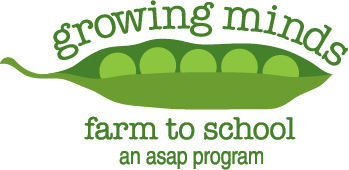This week’s theme is soup. Our “Growing Minds Day by Day” educational resource lists are designed for families and educators.
Growing Minds Day by Day
Soup’s On!
Books:
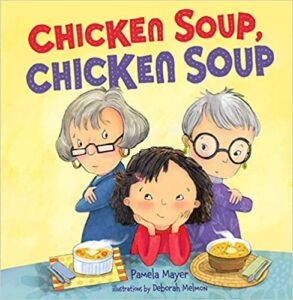
Chicken Soup, Chicken Soup
By Pamela Mayer & Deborah Melmon
“Two grandmas. Two delicious recipes. Sophie loves Bubbe’s Jewish chicken soup, made with kreplach. She also loves Nai Nai’s Chinese chicken soup, with wonton. But don’t tell Bubbe and Nai Nai that their soups are the same!” Includes recipes for Bubbe and Nai Nai soups. Watch a read aloud on YouTube.
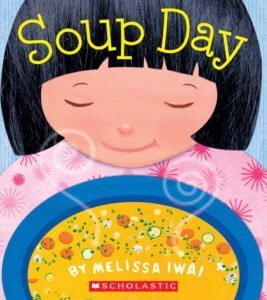
Soup Day
by Melissa Iwai
A mother and daughter spend a snowy day together buying and preparing vegetables, assembling ingredients, and playing while their big pot of soup bubbles on the stove. Includes a recipe for “Snowy Day Vegetable Soup.” Watch a read aloud on YouTube.

Mean Soup
by Betsy Everitt
It has been a bad day for Horace. A very bad day. He’s come home feeling mean. But his mother knows just what to do! “For the book Mean Soup, the recipe is as follows: (1) clever text spiced with one or two outrageous bits; (2) a grand message about getting out anger instead of locking it inside; and (3) exciting artwork as full of life as the story.” Watch a read aloud on YouTube.
Find more books
Visit the Growing Minds’ farm to school literature database to discover more of our favorite children’s books. Use the search bar to explore more of our favorite stories about soup. As a reminder, educators in the Asheville area are also welcome to check out books from our farm to school lending library.
Recipe:
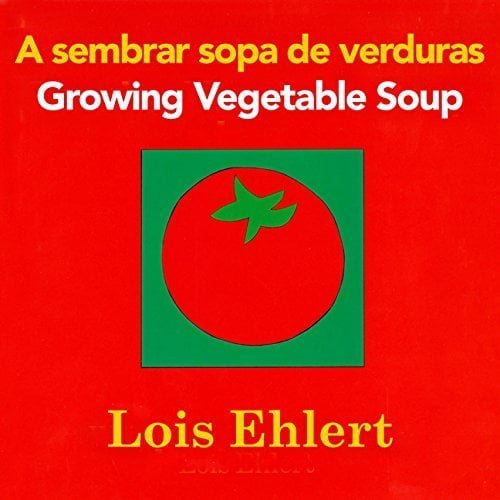
Try and include at least one locally grown vegetable in this soup if you can. You may be able to find storage vegetables like carrots, onions, potatoes, and cabbage at farmers markets in the winter.
Vegetable Soup
From the book Growing Vegetable Soup, written and illustrated by Lois Ehlert. Watch a read aloud of the book here.
Yield: 8-12 servings
Ingredients:
PART 1
- 1 large onion, peeled
- 2 carrots
- 1 medium potato with skin
- 9 green beans, ends removed
- 1/6 small head cabbage
- 1 stalk broccoli
- 3 medium tomatoes
- 1 small green pepper
- 1 zucchini (5-6 inches)
- 1 ear corn, husked
PART 2
- 4 bouillon cubes
- 5 cups water
- 1 big handful peas
- 1 bay leaf
- ½ cup parsley, snipped
- 1 teaspoon dried marjoram
- 1 teaspoon dried thyme
- Salt and pepper to taste
Directions:
PART 1
- Slice onion and carrots into rounds. Cut the potato into cubes. Cut beans into 1 inch pieces. Chop cabbage wedge into shreds. Put in a large cooking pot. Set aside.
- Slice broccoli stem into rounds, leave tops whole. Chop tomatoes into eighths. Cut out the stem of green pepper and take out seeds; slice pepper into rounds, then into pieces. Slice zucchini into rounds. Cut corn off cob. Put in a bowl. Set aside.
PART 2
- Add bouillon cubes and water to the cooking pot with vegetables. Bring to boil.
- Reduce heat to medium low and simmer, uncovered, about 10 minutes.
- Add peas. Add vegetables in the bowl. Add herbs. Stir. Bring to simmer.
- Taste, then add salt & pepper. Stir.
- Simmer, uncovered, about 10 minutes longer, until vegetables are crisp-tender.
- Enjoy!
Educational Resources:
Growing Minds Resources
- Cooking Play lesson plan (preschool): Children learn about a variety of cooking tools including plastic knives, measuring spoons and cups, whisks and mixing spoons. Through a fun, dynamic learning environment children explore how to use the tools successfully.
- Inch by Inch, Row by Row lesson plan (3-5): Students will determine the space needed to grow the vegetables for a soup recipe. They will then make the soup using seasonal ingredients from a local farm as an optional extension activity.
- Kids Cooking Bingo
- More recipes:
Activity:
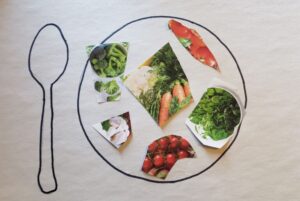
Pot of Soup Collage
Materials:
- Paper
- Magazines or seed catalogs
- Scissors
- Glue
- Journals (optional)
- World map, post-it notes, and marker (optional)
First, ask children to think about a type of soup they enjoy. Why do they like it? Is it a family recipe? Have they ever helped prepare the soup? Have they eaten it in a restaurant? What ingredients are in the soup? Is it eaten warm, or cold? What is the texture of the soup? Is it a broth-based soup with a lot of liquid, a creamy soup, or a chunky stew? Do they eat the soup year-round, or during a specific season? If you like, you can ask children to write about the soup in their journal.
Next, students can draw a bowl or pot on a piece of paper (or you can provide them with a pre-cut bowl), then cut out “ingredients” for their soup from magazines, seed catalogs, or colored paper and paste them to their bowl to make their own soup.
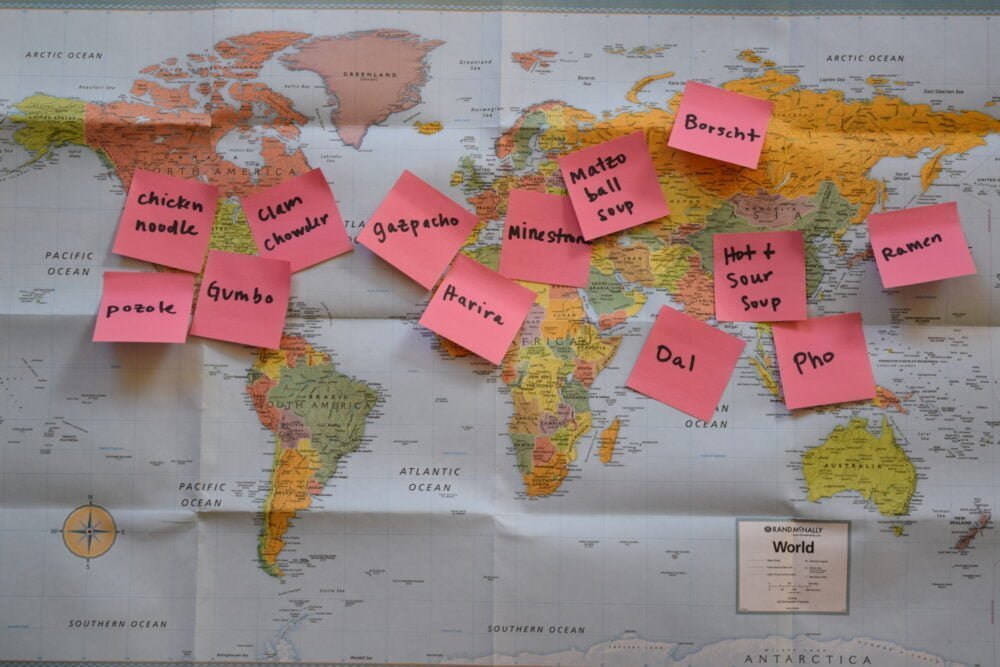
As an optional extension, ask the children to name different kinds of soup eaten by different cultures around the world (for example, Japanese ramen, Spanish gazpacho, Mexican pozole, Russian borscht, Vietnamese pho, Indian dal, American gumbo or New England clam chowder, French onion, etc.). As they brainstorm, write the soups on post-it notes, then stick them to the world map in the appropriate country or region where the soup originates. Discuss how soup is a general type of food that is adapted by people around the world based on the ingredients available and the customs of their culture.
Plan a Soup Garden:
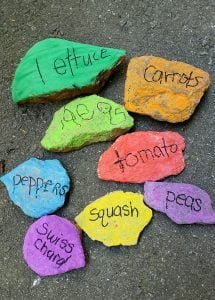
Themed garden beds are a creative, fun way to organize a vegetable garden. This spring, try planning a soup garden with your family or class! First, brainstorm a type of soup you would like to make together. You may need to vote to make your final decision.
What are some of the ingredients required for your chosen soup? For example, if you were designing a “chicken noodle soup garden”, it might include carrots, celery, onions, and parsley. A “gazpacho garden” might include tomatoes, bell peppers, cucumbers, and onions.
Once you’ve decided what veggies and herbs to grow in your soup garden, make a diagram of your garden bed and lay out your planting plan. You might try using the square foot gardening method, or a more free-form design. Be sure to use a seed catalog or the internet to determine how much space all of your plants will need in order to thrive. Once you’ve finalized your design, your next step is to order seeds or make a plan for purchasing seedlings in the spring.
Our Garden Planning lesson can help your class or family imagine various garden types and designs, then decide on what you want to grow. Find more tips in our “Starting a Garden” resource list. You might also want to make garden signs to identify the plants you will grow in your soup garden.
—
That’s it for this week. Check back next week for new resources. Click here to access Day by Day resources from past weeks. If you didn’t find what you’re looking for here, please visit our Lesson Plans page.
